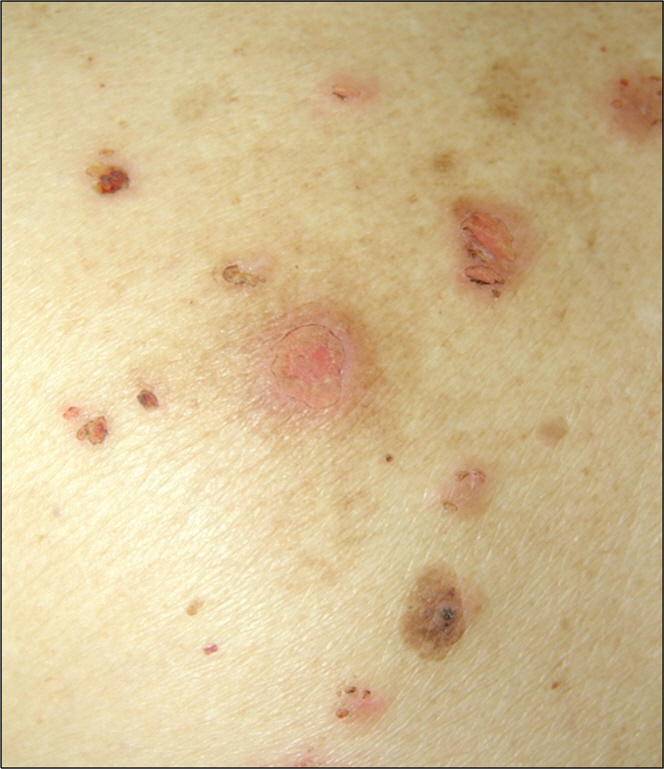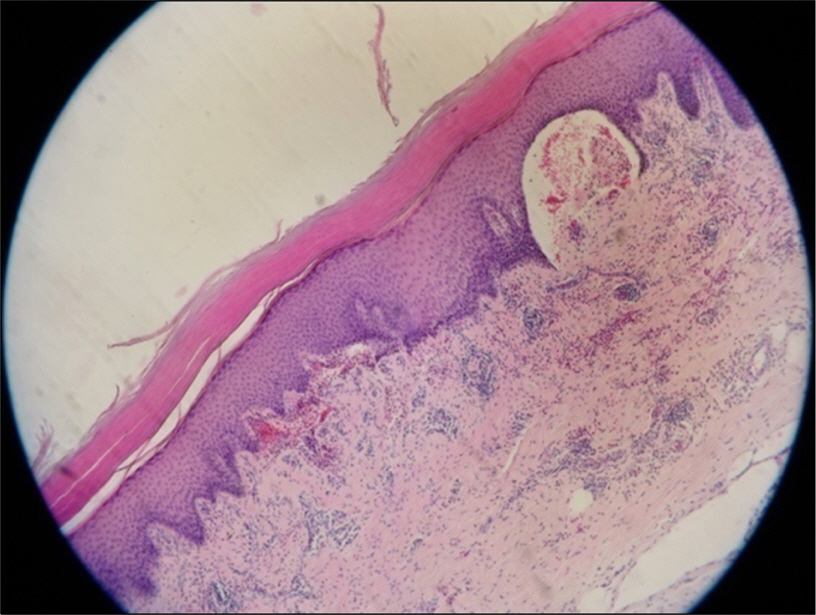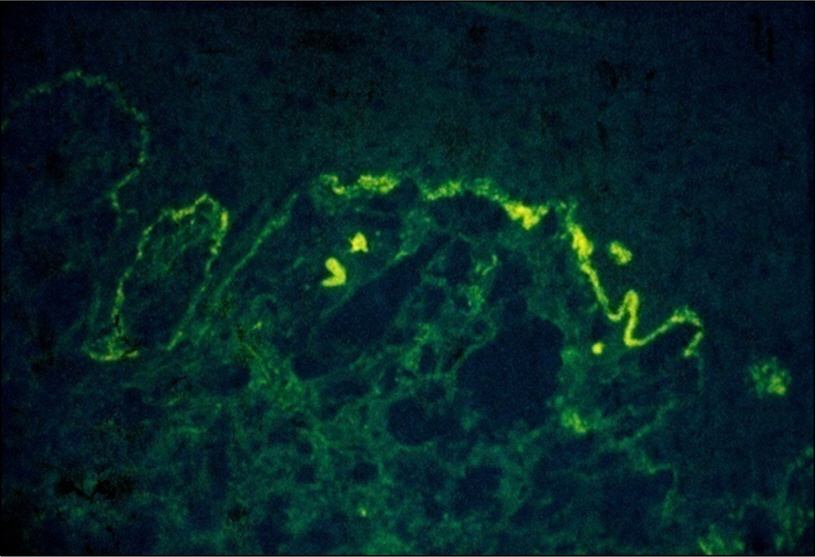J Korean Rheum Assoc.
2010 Dec;17(4):422-425. 10.4078/jkra.2010.17.4.422.
A Case of Bullous Pemphigoid Arising after Infliximab Therapy in a Patient with Rheumatoid Arthritis
- Affiliations
-
- 1Department of Rheumatology, Maryknoll Hospital, Busan, Korea. ete@lycos.co.kr
- KMID: 2201902
- DOI: http://doi.org/10.4078/jkra.2010.17.4.422
Abstract
- Bullous pemphigoid is an autoimmune, subepidermal blistering disease commonly seen in the elderly. It is known as autoimmune bullous dermatoses with an estimated prevalence of 1 in 40,000 and shows no gender or racial predilection. It has an autoimmune nature with immunoglobulin (Ig) G and/or C3 complement targeting hemidesmosomal antigens located in the epidermal basement membrane zone. Drug-induced pemphigoid, although rare, can occur in patients taking penicillamine, furosemide, captopril, penicillin, or sulfasalazine, but infliximab-induced pemphigoid has not been reported. We experienced a case of infliximab-induced pemphigoid in 54-year-old woman with a 17-year history of rheumatoid arthritis.
Keyword
MeSH Terms
-
Aged
Antibodies, Monoclonal
Arthritis, Rheumatoid
Basement Membrane
Blister
Captopril
Complement C3
Female
Furosemide
Humans
Infliximab
Immunoglobulins
Middle Aged
Pemphigoid, Bullous
Penicillamine
Penicillins
Prevalence
Skin Diseases, Vesiculobullous
Sulfasalazine
Antibodies, Monoclonal
Captopril
Complement C3
Furosemide
Immunoglobulins
Penicillamine
Penicillins
Sulfasalazine
Figure
Reference
-
1). Cleveland Clinic: Current Clinical Medicine 2009. 1st ed.Chapter 44. Philadelphia, PA, Saunders;2009.2). Ferri FF. Ferri's Clinical Advisor 2010. 1st ed.p. 240. Philadelphia, PA, MOSBY;2010.3). Duong TA., Buffard V., AndreA C., Ortonne N., Revuz J., Bagot M, et al. Efalizumab-induced bullous pemphigoid. J Am Acad Dermatol. 2010. 62:161–2.
Article4). Rongioletti F., Parodi A., Rebora A. Dyshidrosiform pemphigoid: report of an additional case. Dermatologica. 1985. 170:84.5). Levine N., Freilich A., Barland P. Localized pemphigoid simulating dyshidrosiform dermatitis. Arch Dermatol. 1979. 115:320–1.
Article6). Tamai K., Li K., Uitto K. Idendification of a DNA-binding protein (keratinocyte transcriptional protein-1) recognizing a keratinocyte-specific regulatory element in the 230 kDa bullous pemphigoid antigen gene. J Biol Chem. 1994. 269:493–502.7). Pfau A., Hohenleutner U., Hohenleutner S., Eckert F., Landthaler M. UVA-provoked localized bullous pemphigoid. Acta Derm Venereol. 1994. 74:314–6.8). Bordignon M., Belloni-Fortina A., Pigozzi B., Tarantello M., Alaibac M. Bullous Pemphigoid during Long-Term TNF-a Blocker Therapy. Dermatology. 2009. 219:357–8.9). Chang YT., Liu HN., Wong CK. Bullous pemphigoid: a report of 86 cases from Taiwan. Clin Exp Dermatol. 1996. 21:20–2.10). Heffernan MP., Bentley DD. Successful treatment of mucous membrane pemphigoid with infliximab. Arch Dermatol. 2006. 142:1268–70.
Article





